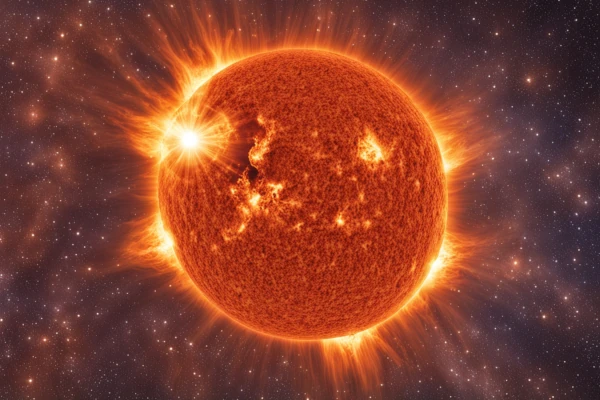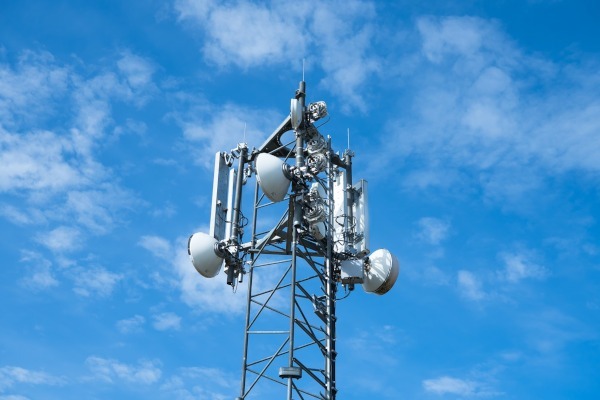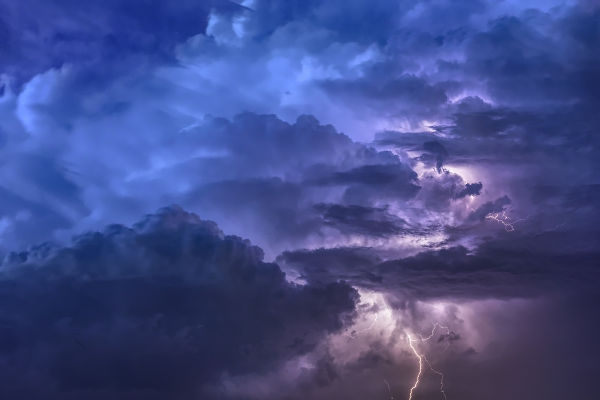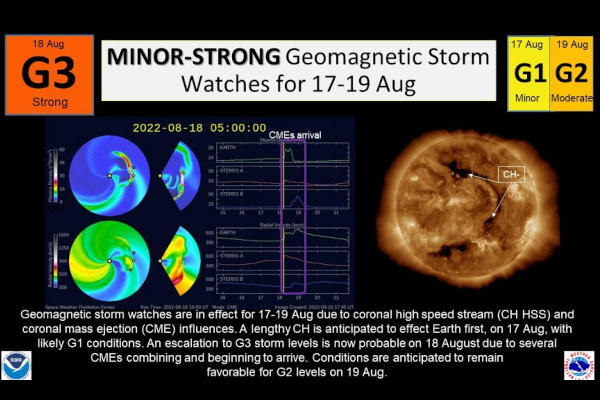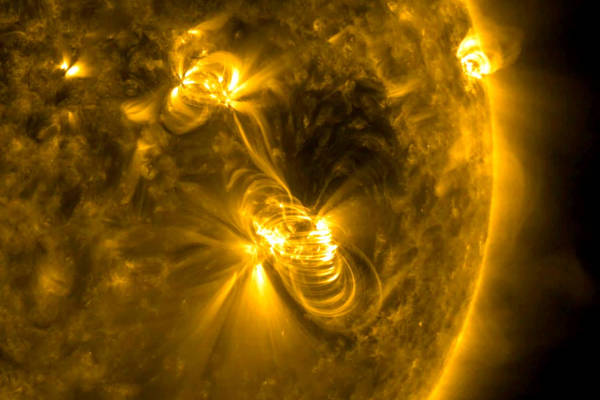On Thursday, May 9, 2024, the NOAA Space Weather Prediction Center issued a Severe (G4) Geomagnetic Storm Watch. The last time since a Severe (G4) Geomagnetic Storm Watch was issued was January 2005. Watches of this level are considered rare.
Some of the CME’s will reach earth and highly elevated geomagnetic activity. The CMEs will eventually merge with potential arrival expected by early May 11 on the UTC day:
CMEs are explosions of plasma and magnetic fields from the sun’s corona. They cause geomagnetic storms when they are directed at Earth. Geomagnetic storms can impact infrastructure in near-Earth orbit and on Earth’s surface, potentially disrupting communications, the electric power grid, navigation, radio and satellite operations. SWPC has notified the operators of these systems so they can take protective action. Geomagnetic storms can also trigger spectacular displays of aurora on Earth. A severe geomagnetic storm includes the potential for aurora to be seen as far south as Alabama and Northern California.
At least seven earth-directed coronal mass ejections (CMEs) were observed and expected to arrive as early as midday Friday, May 10, 2024, and persist through Sunday, May 12, 2024. Several strong flares have been observed over the past few days and were associated with a large and magnetically complex sunspot cluster (NOAA region 3664), approximately 16 times the diameter of Earth.
The current solar cycle began in December 2019. Three severe magnetic storms has been observed since then. March 23, 2024 was the last time a G4 event occurred and the last G5 event occurred in October 2003 which produced power outages in Sweden and damaged power transformers in South Africa.
As with more severe geomagnetic storms, the question often arises whether or not this next event could be similar to the Carrington event of 1859 where the sun emitted several intense solar flares and CMEs. The geomagnetic storms produced telegraph offices fires and created auroras extending beyond their normal range.
